Small Exercise Ball for Back Pain
One of the most daunting aspects of treating back pain is the cost. Many people suffering from back pain, especially lower back pain, fear that the only way to get better will involve costly visits to a chiropractor, injections at a physician’s office that are not covered by health insurance, or any number of prescriptions or physical therapy orders.
While it is true that in some cases medical intervention is required, many cases of lower back pain can be treated effectively in a low-cost (or free) way to you. Sometimes simple exercises are the solution to your pain, and you may already own the equipment needed!
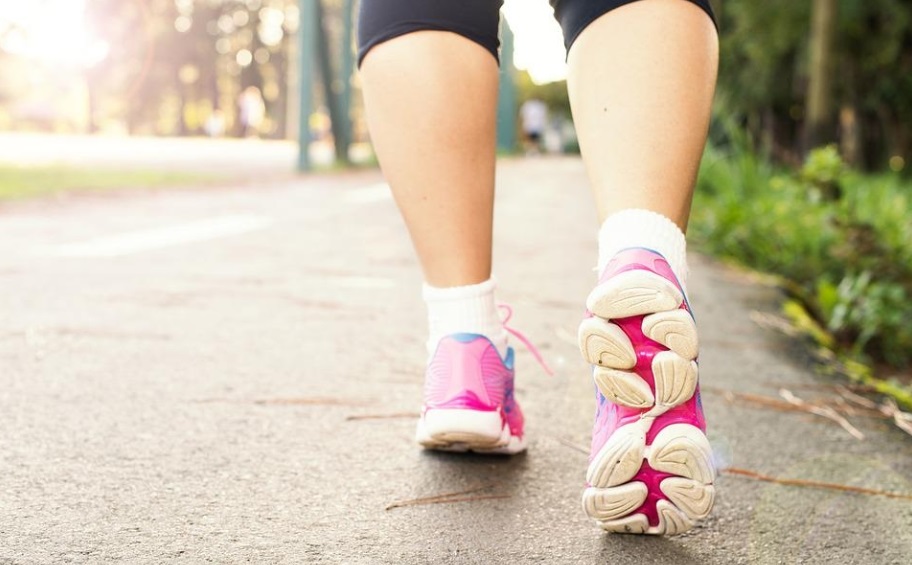
Image Credit: Pixabay
The first way to address back pain starts with your own two feet: walking as much as you are able can provide a great deal of relief. Beyond a brisk walk each day, you can also perform simple exercises with a small gym ball to help your back. We will get to those below along with our top picks for small exercise balls, but first, let’s take a look at how and why lower back pain starts.
Lower Back Pain: How it Starts
Lower back pain comes in both acute and chronic forms, with acute pain occurring temporarily but chronic pain lasting for three months or more.
One of the most common reasons people will experience acute lower back pain at some point in their lives is related to muscle strains or a sprained ligament.
If you remember hearing your parents say “lift with your knees,” that advice was intended to help you avoid this kind of injury. It may last for only a short time, but acute lower back pain from a strain can be difficult to bear and can interfere with all of your daily activities. This pain most often occurs when:
- You experience stress to your back from a fall or injury (including sports injuries)
- You lift something heavy (or twist while lifting an object)
- You have consistently poor posture

Image Credit: Unsplash
In these cases of strain or sprain, either the muscle is stretched too far and tears or the ligament is damaged from the stretching. It is important to note that this kind of low back pain can occur instantly, or it can develop over time (such as in the case of sports injuries and repetitive stress).
Chronic lower back pain, on the other hand, can be indicative of an underlying cause such as:
- Degenerative disc disease
- Sacroiliac joint dysfunction
- A herniated disc
- Spinal stenosis
- Osteoarthritis
 This list is by no means exhaustive, but it does cover some common reasons for chronic back pain. The most important thing to bear in mind is that you should not attempt to diagnose yourself if your pain is severe and ongoing, with no easily explained cause (such as a fall or a sports injury).
This list is by no means exhaustive, but it does cover some common reasons for chronic back pain. The most important thing to bear in mind is that you should not attempt to diagnose yourself if your pain is severe and ongoing, with no easily explained cause (such as a fall or a sports injury).
Discuss any back pain with your healthcare provider, who can use tests and imaging to try to determine why it is happening. Also, be sure to discuss any new exercise regimen with your doctor. The last thing you would want to do in attempting to alleviate back pain is to make it worse!
Small Exercise Balls for Back Pain: A Guide
Most people are familiar with the way large or oversized balls are used for a variety of exercises as well as pain relief. It is not uncommon to see people sitting on a large exercise ball in place of an office chair.
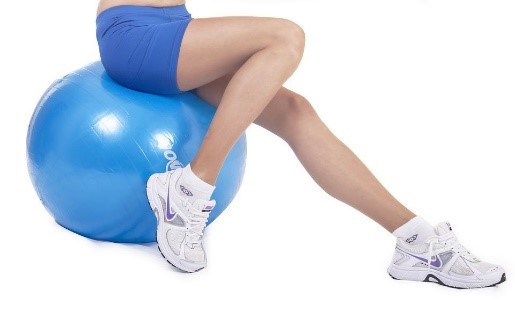 When we sit on these types of balls, we use back and abdominal muscle to maintain balance and build strength over time, ultimately strengthening the back and relieving or preventing pain.
When we sit on these types of balls, we use back and abdominal muscle to maintain balance and build strength over time, ultimately strengthening the back and relieving or preventing pain.
A large exercise ball or stability ball (which can be cumbersome and difficult to store) are not the only effective tool when it comes to alleviating back pain. Smaller gym balls can also be effective at targeting pain when used properly.
Remember that you should consult a physician first before attempting any exercise to reduce back pain.
Small Ball Exercises for Back Pain
A small gym ball can help relieve back pain when used with some simple exercises. The primary objective with these balls is the strengthening of your core, and if you have not heard the phrase “strengthen your core” over the past decade you have probably been living off the grid! Core strength is one of the most emphasized components of physical fitness and for good reason.
The Benefits of Core Strength
As you strengthen and tone your core, you will experience many benefits including:
- Greater spine support, allowing you to lift heavier objects with a reduced chance of injury
- Reduced pressure on your hips, knees, and ankles
- Reduced lower back pain
- Improved posture
- Better balance
Pregnant women also tend to experience easier labor and recovery if they have a strong core before pregnancy. The strength of your midsection even relates to your life span as a stronger abdomen typically means you will live longer than those with a weaker core.
The exercises below are a great start with a small gym ball to build your strength and reduce back pain.
Oblique Curls
Your oblique muscles are the outermost part of the abdomen (or the sides) and are incredibly important when it comes to core strength. You can perform this simple exercise by lying on your back and then placing the small exercise ball underneath your lower back.
Place your hands behind your head (as when getting ready to do a traditional curl or sit-up), or you can cross them in an “X” and rest your hands on your shoulders. Then lean your body back over the ball and twist to one side. Once you are twisted, make sure you contract your abs. Then raise yourself back to the starting position and repeat the process on the other side.
You can start with 10 repetitions on each side and work your way up as your strength increases.
Reverse Curl-Ups
Another great way to strengthen your core with a small exercise ball and reduce lower back pain is with reverse curl-ups. This particular exercise is focused on your lower abdomen.
Start lying down and place your small exercise ball between your knees. Then lift or raise your knees toward the ceiling while keeping your arms and back flat on the ground. You might think of this as a thrusting motion, pushing your lower body upward.
Try 20 repetitions to start and increase as you grow stronger.
Hip Extensions
Another surefire way to address back pain is by strengthening your back muscles. Most people tend to focus only on abdominal muscles, but it is important to remember that the major back muscles are also part of your core.
Hip extensions target the back muscles and are a simple movement you can do with an exercise ball. Lie flat on your stomach with the ball between your ankles. Lift your ankles (squeezing the ball) as far as you can comfortably and hold for a few seconds, then gently and slowly lower them back to the ground.
Try doing this exercise 10 to 15 times to start and then increase your reps as you gain strength. Looks can be deceiving with this one. It seems almost too easy, until you try it!
Small Exercise Balls: Our Favorites
Now that you know a few simple exercises you can try in the comfort of your own home to alleviate back pain, all you need is the exercise ball! We have rounded up the best exercise ball choices here:
1. PACEARTH Small Exercise Ball

- Material: PVC + PP
- Diameter: 9 inches
This lightweight yet durable ball from PACEARTH boasts a honeycomb structure design intended to prevent the ball from bursting, and the anti-slip PVC makes it easy to grip the ball in the exercises described above.
Included with the exercise ball is a mini pump, straw, and plug remover, as well as a handy carrying bag. This inexpensive exercise tool is a favorite among coaches and trainers, used in a wide variety of fitness settings from yoga to Pilates to barre.
If the basic black version of the PACEARTH small exercise ball bores you, you can order one in blue or teal! No matter which color you choose, this ball can certainly help you strengthen your core and reduce lower back pain.
2. Trideer Pilates Ball
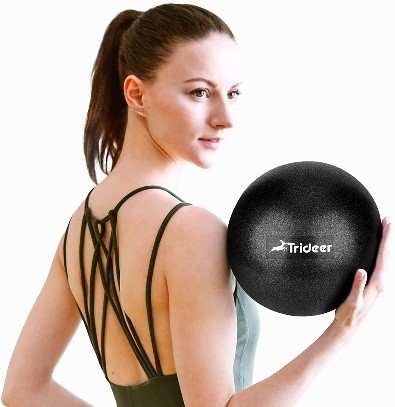
- Material: Non-toxic and 6P free PVC
- Diameter: 9 inches
Trideer’s exercise ball is another outstanding option for strengthening your back and alleviating lower back pain. The slight texture helps the ball stay in place during exercise, and it can be used for Pilates, yoga, and more.
This ball is easy to inflate with the tubes provided and also comes with two plugs, a plug remover, a user manual, and a handy workout guide. (That’s a lot of bang for your buck at an extremely low price point!)
The Trideer exercise ball comes in five color choices and is also recommended by trainers, physical therapists, and fitness experts. This is a low-cost way to gain strength and reduce pain, making the Trideer exercise ball a reliable choice.
3. URBNFit Small Exercise Ball
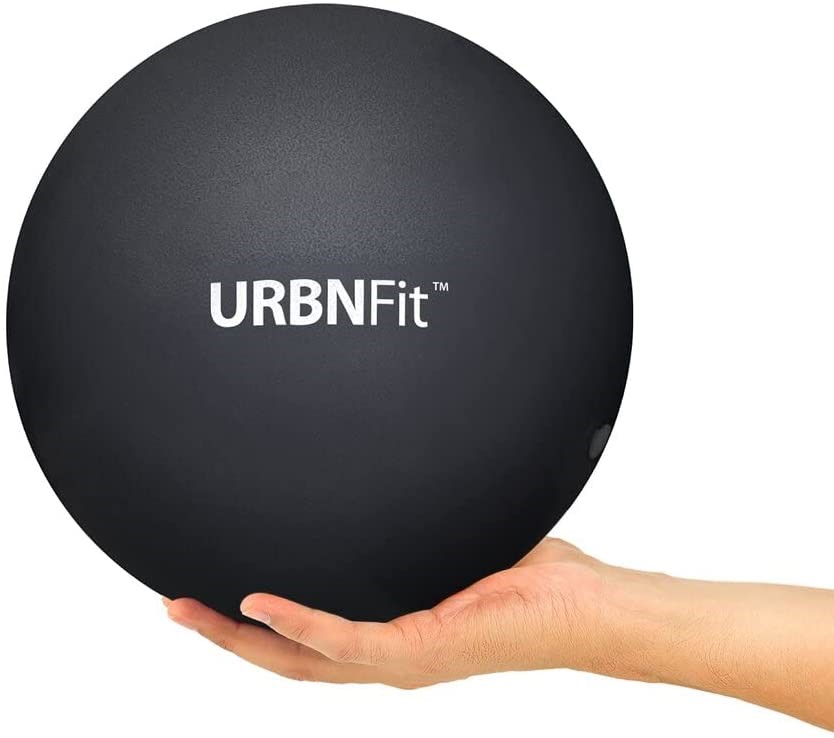
- Material: PVC
- Diameter: 9 inches
Available in black, a vibrant blue, or a cheerful pink, URBNFit’s Small Exercise Balls is another one of our favorite choices. This durable ball can support up to 600 pounds and can be inflated (and deflated) quickly and with ease.
The nonslip glaze on the ball keeps it steady during exercises and it is recommended by top trainers for use in everything from yoga to physical therapy. You can use this ball to not only improve core strength (and reduce pain) but also to increase your range of motion, balance, and flexibility.
Included with the URBNFit exercise ball are an inflation straw, extra plugs, and a workout guide. Use this ball to try out the exercises outlined in this article or the ones in the URBNFit workout guide and you are bound to see an increase in strength and a decrease in pain.
4. TheraBand Mini Ball
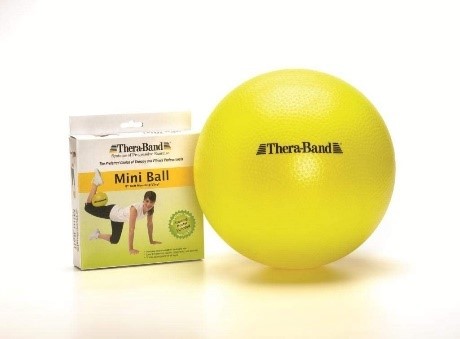
- Material: PVC
- Diameter: 9 Inches
This may be called a “mini” ball, but the TheraBand exercise ball can make a big impact when it comes to strength building. It’s our last (but by no means least) favorite choice when it comes to gym balls to help with lower back pain.
Easily inflated with a small tube (no pump required), this ball is often used in yoga and Pilates workouts and helps you increase your abdominal strength with a variety of simple but strategic exercises. An exercise poster is included along with the inflation tube and plug so you can follow along with the moves recommended by the manufacturer or try using this ball with the exercises we outline in this article.
TheraBand produces a high-quality, non-slip, and non-burst ball you can count on to last through your workouts. The non-slip ball works best when placed against a hard surface such as a bare floor or wall.
Final Thoughts
Each fitness ball makes a great choice for anyone looking to alleviate lower back pain by improving core strength. They are affordable and easy to store and carry, making them a no-brainer choice for treating back pain.
A simple exercise routine (one that you have discussed with your doctor) could end up saving you a great deal of time and money if your back pain progresses and you need expensive prescriptions, physical therapy, surgery, or other medical intervention.
Additionally, these exercises do not require a big commitment and can be done in the comfort of your own home, at the gym, or even in your office.